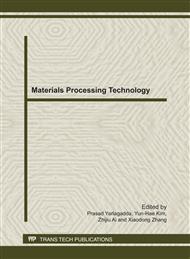p.564
p.570
p.575
p.584
p.588
p.594
p.598
p.603
p.608
Investigation on the Residual Stress Redistribution under Cyclic Loading
Abstract:
The residual stress,which is unavoidable in the process of flash-butt-weld rails,plays important roles in the service life of the railway rails.Residual stress can and do change in service.In this paper,the distribution of initial residual stress was presented,and the redistribution was measured after 2×106 cycles as well.The result shows that residual stress would change after appling fatigue loading.After 2×106 cycles,the residual stress of some tested places increased while others decreased,the state of the longitudinal residual stress in the side region and the foot region has not changed,which still presented compressive,while the change of the longitudinal residual stress in the head region and the foot region does not present general tendency. In the transverse direction,residual stress in the head and side head regions decreases while the foot region shows opposite change.
Info:
Periodical:
Pages:
588-593
Citation:
Online since:
September 2011
Authors:
Price:
Сopyright:
© 2011 Trans Tech Publications Ltd. All Rights Reserved
Share:
Citation:


